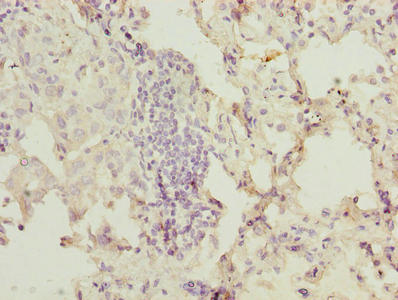O-GlcNAc transferase antibody [HL1642]
GTX637223
ApplicationsImmunoFluorescence, Western Blot, ImmunoCytoChemistry, ImmunoHistoChemistry, ImmunoHistoChemistry Paraffin
Product group Antibodies
TargetOGT
Overview
- SupplierGeneTex
- Product NameO-GlcNAc transferase antibody [HL1642]
- Delivery Days Customer9
- Application Supplier NoteWB: 1:500-1:3000. *Optimal dilutions/concentrations should be determined by the researcher.Not tested in other applications.
- ApplicationsImmunoFluorescence, Western Blot, ImmunoCytoChemistry, ImmunoHistoChemistry, ImmunoHistoChemistry Paraffin
- CertificationResearch Use Only
- ClonalityMonoclonal
- Clone IDHL1642
- Concentration1 mg/ml
- ConjugateUnconjugated
- Gene ID8473
- Target nameOGT
- Target descriptionO-linked N-acetylglucosamine (GlcNAc) transferase
- Target synonymsHINCUT-1, HRNT1, MRX106, O-GLCNAC, OGT1, XLID106, UDP-N-acetylglucosamine--peptide N-acetylglucosaminyltransferase 110 kDa subunit, O-GlcNAc transferase p110 subunit, O-GlcNAc transferase subunit p110, O-linked N-acetylglucosamine (GlcNAc) transferase (UDP-N-acetylglucosamine:polypeptide-N-acetylglucosaminyl transferase), O-linked N-acetylglucosamine transferase 110 kDa subunit, UDP-N-acetylglucosamine:polypeptide-N-acetylglucosaminyl transferase, uridinediphospho-N-acetylglucosamine:polypeptide beta-N-acetylglucosaminyl transferase
- HostRabbit
- IsotypeIgG
- Protein IDO15294
- Protein NameUDP-N-acetylglucosamine--peptide N-acetylglucosaminyltransferase 110 kDa subunit
- Scientific DescriptionThis gene encodes a glycosyltransferase that catalyzes the addition of a single N-acetylglucosamine in O-glycosidic linkage to serine or threonine residues. Since both phosphorylation and glycosylation compete for similar serine or threonine residues, the two processes may compete for sites, or they may alter the substrate specificity of nearby sites by steric or electrostatic effects. The protein contains multiple tetratricopeptide repeats that are required for optimal recognition of substrates. Alternatively spliced transcript variants encoding distinct isoforms have been found for this gene. [provided by RefSeq, Oct 2009]
- Storage Instruction-20°C or -80°C,2°C to 8°C
- UNSPSC12352203





